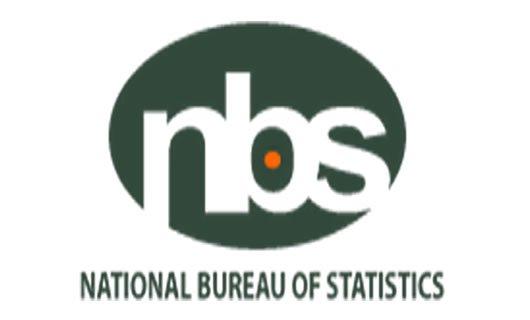
The National Bureau of Statistics (NBS), says Nigeria’s headline inflation rate rose to 24.23 per cent in March 2025.
The NBS disclosed this in its Consumer Price Index (CPI) and Inflation Report for March 2025, which was released in Abuja.
According to the report, the headline inflation showed an increase of 1.05 per cent compared to the 23.18 per cent recorded in February 2025.
Furthermore, the report said on a month-on-month basis, the headline inflation rate in March 2025 was 3.90 per cent, which was 1.85 per cent higher than the rate recorded in February 2025 at 2.04 per cent.
“This means that in March 2025, the rate of increase in the average price level is higher than the rate of increase in the average price level in February 2025.”
The report said the increase in the headline index for March 2025 on a year-on-year and month-on-month basis was attributed to the increase in some items in the basket of goods and services at the divisional level.
It said these increases were observed in food and non-alcoholic beverages; restaurants and accommodation services; transport; housing, water, electricity, gas, and other fuel; education services; health; and clothing and footwear.
Others are information and communication; personal care, social protection and miscellaneous goods and services; furnishings, household equipment and maintenance; insurance and financial services; alcoholic beverages, tobacco and narcotics, recreation sports and culture.
The report said the food inflation rate in March 2025 was 21.79 per cent on a year-on-year basis.
However, on a month-on-month basis, food inflation rate in March was 2.18 per cent , which increased by 0.50 per cent compared to the 1.67 per cent recorded in February 2025 .
The NBS said the increase in the food inflation figure was atributed to the rate of increase in the average prices of Ginger (fresh), Garri (Yellow), Broken Rice (Ofada), and Honey (Natural Production).
Others are Crabs, Potatoes, Plantain Flour, Periwinkle (Unshelled), and Pepper (Fresh) among others,
The report said “all items less farm produce and energy’’ or core inflation, which excludes the prices of volatile agricultural produce and energy, stood at 24.43 per cent in March 2025 on a year-on-year basis.
“While on a month-on-month basis, the Core Inflation rate was 3.73 per cent in March, which increased by 1.21 per cent compared to the 2.52 per cent recorded in February.”
The NBS said on a month-on-month basis Farm Produce rate stood at 2.64 per cent compared to the 1.77 per cent recorded in February 2025.
The report said Energy rate stood at 9.21 per cent in March on a month-on-month basis, compared to the – 0.99 per cent recorded in February.
It said Services stood at 3.344 per cent in March 2025 on a month-on-month basis, compared to 3.38 per cent in February.
“While Goods had a rate of 3.89 per cent on a month-on-month basis compared to the 1.29 per cent recorded in February.”
The report said on a year-on-year basis in March 2025, the urban inflation rate was 26.12.
“On a month-on-month basis, the urban inflation rate was 3.96 in March 2025, which increased by 1.56 per cent compared to February at 2.40 per cent.
The report said on a year-on-year basis in March, the rural inflation rate was 20.89 per cent.
“On a month-on-month basis, the rural inflation rate was 3.73 per cent in March, which increased by 2.57 per cent compared to February at 1.16 per cent.”
On states’ profile analysis, the report showed that in March , all items’ inflation rate on a year-on-year basis was highest in Kaduna at 33.33 per cent, followed by Osun at 32.08 per cent , and Kebbi at 30.74 per cent.
It, however, said the slowest rise in headline inflation on a year-on-year basis was recorded in Akwa Ibom at 12.81 per cent, followed by Bayelsa at 14.02 per cent, and Sokoto at 14.83 per cent.
The report, however, said in March 2025, all items inflation rate on a month-on-month basis was highest in Kaduna at 18.85 per cent, followed by Osun at 16.49 per cent, and Oyo at 14.44 per cent.
“Sokoto at -8.66 per cent, followed by Nasarawa at -4.38 per cent and Kwara at -3.69 per cent recorded the slowest rise in month-on-month inflation.”
The report said on a year-on-year basis, food inflation was highest in Oyo at 34.41 per cent, followed by Kaduna at 31.14 per cent, and Kebbi at 30.85 per cent.
“Bayelsa at 9.61 per cent, followed by Adamawa at 12.41 per cent and Akwa Ibom at 12.60 per cent recorded the slowest rise in food inflation on a year-on-year basis.’’
The report, however, said on a month-on-month basis, food inflation was highest in Oyo at 19.74 per cent, followed by Kaduna at 17.24 per cent, and Kebbi at 14.03 per cent.
“Sokoto at -14.10 per cent, followed by Nasarawa at -9.91 per cent and Edo at -5.78 per cent, recorded the slowest rise in inflation on a month-on-month basis.”
The News Agency of Nigeria (NAN) recalls that the NBS recently rebased the CPI and released the rebased CPI results for January 2025 in February.
The Statistician-General of the Federation, Adeyemi Adeniran said the rebasing was designed to ensure that Nigeria’s economic indicators accurately reflect the current structure of the economy.
This according to him, was also to incorporate new and emerging sectors, updating consumption baskets, and refining data collection methods.
Adeniran said part of the process of rebasing the CPI included bringing the base year closer to the current period, from 2009 to 2024. (NAN)


